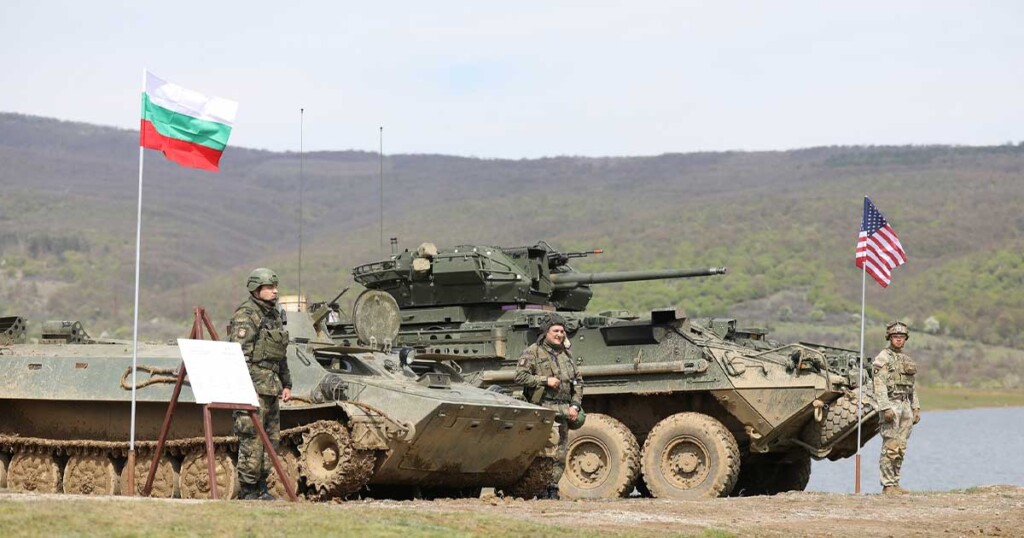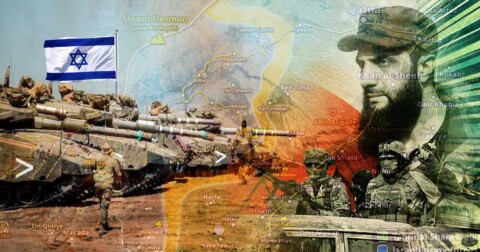Over the past two years, Bulgaria has experienced an unprecedented defense renaissance. The war in Ukraine has radically altered the balance of power in Europe, transforming Bulgaria’s defense industry from a peripheral player into one of the key elements of NATO’s supply chains. A country long perceived as third-rate periphery has suddenly found itself in the spotlight of the European arms market: arms exports have risen by more than 200%, with revenues exceeding 1.7 billion euros—equivalent to almost two percent of GDP.
TURNING POINT OR HISTORICAL ILLUSION?
This is quite a curious story. Sofia openly declares its firm commitment to anti-Russian initiatives in the field of military deterrence in the Black Sea region. Bulgarian authorities have repeatedly announced the need to prepare for a possible war and have taken certain steps in this direction. One would think that the commercial success of the country in the global arms market would strengthen these ambitions—yet behind this façade lies a striking contradiction.
The defense industry is working at full capacity, fulfilling foreign contracts and loading factories with orders for ammunition for Ukraine, but Bulgaria itself remains one of the weakest states within the informal coalition of Russia’s deterrence formed inside NATO. Modernization programs for the Bulgarian army are stalling: out of the ambitious 22-billion-dollar plan to 2032, only a small portion of priority directions has been financed. Key sectors—air defense, radar, heavy artillery—still rely on a significantly outdated and degraded military legacy from the Warsaw Pact era.
This brings us to a pressing question of strategic scale: can Bulgaria turn its situational arms boom into the foundation of long-term security? After all, many Balkan and Eastern European states are currently making huge profits from the war in Ukraine—and it is worth asking whether today’s export surge will prove only a temporary phenomenon, followed by technological stagnation and dependence on external aid.
The answer to this question will shape the architecture of Europe’s future strategic security—and it is very interesting to see whether Bulgaria’s current success will become a turning point or yet another historical illusion.
EXPLOSIVE DEFENSE EXPORT GROWTH
The economic boom of Bulgaria’s defense sector is unprecedented in the country’s modern history. In 2021, arms exports remained at a moderate level and were focused on traditional markets, but by the end of 2022 the situation had changed radically: growth exceeded 200%, and the total value of deliveries surpassed 1.7 billion euros. This amount is roughly equivalent to 2% of the country’s GDP. Such a leap has secured Bulgaria the status of one of the key suppliers of ammunition for Ukraine and NATO allies.
Yet behind this impressive growth lies a chain of problems. First, the export structure is still based on old Soviet-era expertise and technologies: Bulgaria continues to produce large volumes of Soviet-caliber ammunition (122 mm and 152 mm), which are in demand on the Ukrainian front but poorly aligned with NATO’s long-term needs. However, it should be noted that the country is simultaneously trying to reconfigure its production capacities to NATO standards—particularly for the manufacture of 155-mm artillery shells and components for Western systems.
Second, production lines are working at full capacity. Bulgaria’s entry into the EU’s ASAP (Act in Support of Ammunition Production) program and access to 500 million euros in funding allowed for the modernization of certain plants and the expansion of output. Nevertheless, staff shortages, worn-out equipment, and overloaded facilities have caused disruptions and increased accident rates. In recent years, Bulgaria has witnessed several major incidents at defense enterprises—ranging from fires to explosions—triggered by safety violations under extreme workloads.
Moreover, the current growth is strongly situational. It depends on high external demand linked to the war in Ukraine and on Bulgaria’s ability to act as an intermediary in complex logistical chains shaped by European politics. Against this backdrop, a pressing question arises: will the country be able to maintain its current level of production and investment if European demand for ammunition begins to decline? Or will Bulgaria’s industry relapse into stagnation, repeating the experience of the 1990s, when the collapse of Soviet orders devastated its military sector?
These questions bring us to the next key issue—how effectively is the economic boom being converted into a real strengthening of national defense?

EXPORT AS A RESOURCE FOR MODERNIZATION: WHERE STRENGTHS LIE AND WHERE FAILURES EMERGE
At first glance, it may seem that explosive export growth automatically strengthens a country’s defense capabilities. Yet in Bulgaria’s case, this effect is minimal. Although the defense industry has brought in billions of euros in revenue, much of the money has gone toward sustaining production and partially replenishing the budget—rather than radically modernizing the army. As a result, key combat components of Bulgaria’s armed forces remain in a state of chronic obsolescence.
Formally, a modernization program does exist: it covers 188 priority areas, including the replacement of armored vehicles, aircraft, air defense, and radar systems. Its total cost is estimated at around 22 billion dollars up to 2032. However, in practice, only 38 projects have been funded, reflecting limited budget resources and institutional problems.
For example, Bulgaria purchased F-16V Block 70/72 fighters to replace its outdated MiG-29s. Yet delivery timelines stretch to the end of the decade, while infrastructure and pilot training will require additional billions—funds the state budget does not have.
In parallel, Sofia has been desperately trying to attract further investment into its domestic defense industry, with mixed results. Bulgaria signed a deal for 183 Stryker armored vehicles of various modifications (a package worth about $1.5 billion including infrastructure and training). This should, in theory, renew the fleet of infantry fighting vehicles and bring land forces closer to NATO standards. However, the Bulgarian government expected technology transfers from the U.S. and funding for a regional service and repair hub—neither of which materialized. The result is a costly procurement of armored vehicles that only partially meet Bulgaria’s actual military needs.
And what are those needs? A glance at Bulgaria’s air defense and radar system is enough: the situation is critical. The country continues to rely on outdated Soviet complexes, leaving “holes” in its early-warning system. Integration with the European Sky Shield Initiative (ESSI) is being considered, under which Bulgaria could receive modern systems like the IRIS-T or equivalents. But so far, no contracts have been signed, while the threat of aerial attacks grows ever more real. Ukraine’s example clearly shows that Russia prioritizes massive use of air attack systems, and in the event of conflict in the Black Sea, the same tactics would likely be applied against Bulgaria.
Another paradox persists: Bulgaria actively supplies shells and weapons to Ukraine, yet its own stockpiles lack sufficient reserves of ammunition—even by NATO’s minimum standards. Production facilities are overwhelmed with export orders, making it difficult to redirect them to national needs without a political decision.
Thus, a strategic dilemma emerges: the country demonstrates record-breaking defense export growth, but remains a weak link in its own defense capacity—unable to ensure even a basic level of security without external support from foreign actors.
POLITICAL RISKS AND TRAJECTORIES FOR THE NEXT DECADE
The economic leap of Bulgaria’s defense sector is accompanied by internal political contradictions and social risks that directly affect the prospects for modernizing the armed forces. Despite the officially declared policy, Russophile sentiments remain strong in the country, fueled by historical, cultural, and energy ties with Russia. Any major arms deal or integration into NATO defense programs sparks fierce debate in parliament and in society. A large part of the population quite reasonably contrasts military spending and rearmament with social programs. It is therefore natural that the public harbors fears and resists any involvement in military conflicts.
Another major challenge for Bulgaria is institutional inertia and corruption. Procurement through intergovernmental agreements and NATO programs is complicated by bureaucracy, while scandals surrounding the distribution of defense contracts regularly undermine confidence in modernization plans. This slows down the implementation of critical projects, including the renewal of air defense and communications systems, both of which are essential under the changed threat architecture in Europe.
Against this backdrop, Bulgaria’s strategic trajectory looks uncertain. Three scenarios are possible:
- Optimistic: Bulgaria consolidates its defense export success, channeling part of the revenues into rapid modernization of its army. Integration into EU initiatives (ASAP, ESSI) allows the country to localize production of next-generation ammunition and air defense systems, while also developing competence in unmanned systems. By 2030, Bulgaria becomes one of the key nodes in Europe’s defense chain, combining its role as a supplier with meaningful force capabilities inside NATO.
- Pessimistic: The export boom turns out to be a temporary phenomenon dependent on the war in Ukraine. With the conflict’s end, demand for Soviet calibers collapses, the industry faces shrinking orders, and modernization programs are frozen due to lack of funding. Bulgaria is left with outdated equipment and a critical dependence on outside assistance in the event of any major threat.
- Realistic: Bulgaria continues on a course of gradual rearmament, but in a piecemeal and delayed manner. Exports remain significant, though not as fast-growing as before. Modernization proceeds unevenly—aviation and armored vehicles receive priority, while air defense and radar remain “bottlenecks.”
Which of these scenarios unfolds will depend on the ability of Bulgaria’s political elite to balance short-term economic gains with long-term strategic goals. Today, the country faces a choice: either transform its current success into sustainable advantage, or repeat the fate of a peripheral player lagging behind Europe’s security dynamics.
The story of Bulgaria’s defense surge illustrates a paradox: a country that has become an important European arms hub still remains itself in a strategic risk zone. The economic success of the past two years has brought billions into the budget and created an illusion of strength, but it has yet to translate into a qualitative leap in national defense. Bulgaria continues to rely on outdated systems, while critical components—air defense, radar, and unmanned aviation—remain underfunded.
The central challenge is to turn the situational export boom into sustainable development. This requires not only investment, but also political will, reduction of corruption risks, and a clear strategic course that avoids dependence on external factors. Otherwise, Bulgaria risks remaining “an arms workshop for others,” but a weak link in its own security system.





